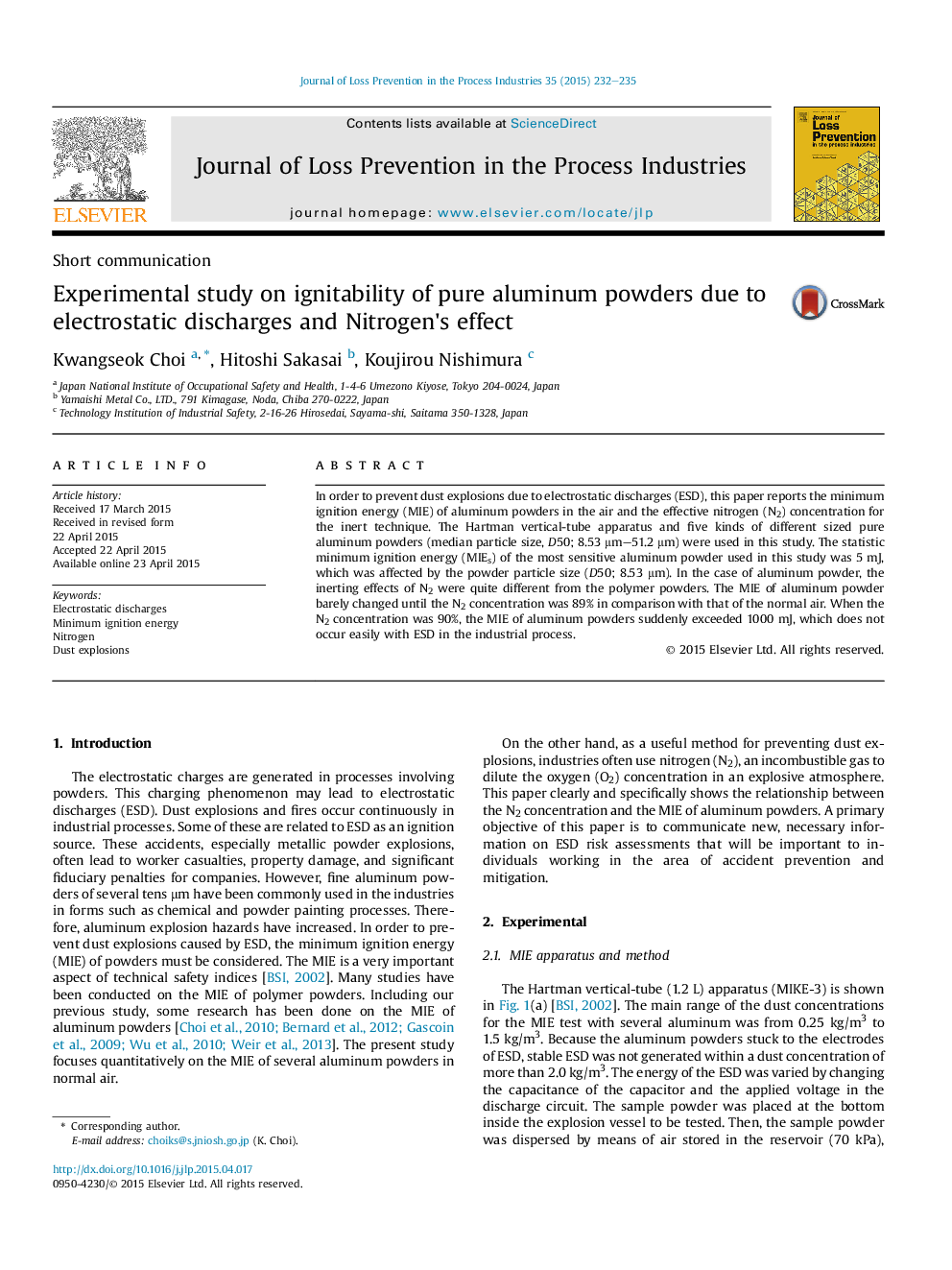| Article ID | Journal | Published Year | Pages | File Type |
|---|---|---|---|---|
| 6973460 | Journal of Loss Prevention in the Process Industries | 2015 | 4 Pages |
Abstract
In order to prevent dust explosions due to electrostatic discharges (ESD), this paper reports the minimum ignition energy (MIE) of aluminum powders in the air and the effective nitrogen (N2) concentration for the inert technique. The Hartman vertical-tube apparatus and five kinds of different sized pure aluminum powders (median particle size, D50; 8.53 μm-51.2 μm) were used in this study. The statistic minimum ignition energy (MIEs) of the most sensitive aluminum powder used in this study was 5 mJ, which was affected by the powder particle size (D50; 8.53 μm). In the case of aluminum powder, the inerting effects of N2 were quite different from the polymer powders. The MIE of aluminum powder barely changed until the N2 concentration was 89% in comparison with that of the normal air. When the N2 concentration was 90%, the MIE of aluminum powders suddenly exceeded 1000 mJ, which does not occur easily with ESD in the industrial process.
Related Topics
Physical Sciences and Engineering
Chemical Engineering
Chemical Health and Safety
Authors
Kwangseok Choi, Hitoshi Sakasai, Koujirou Nishimura,
